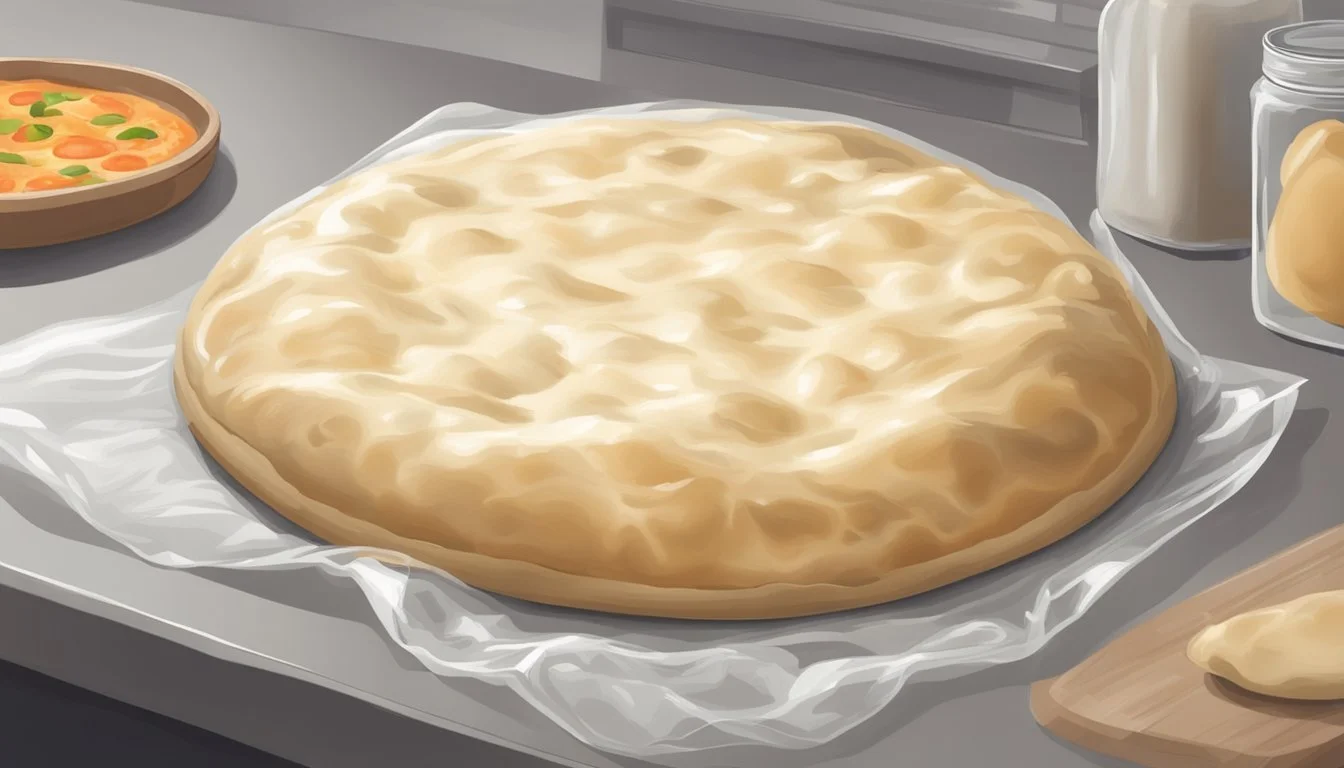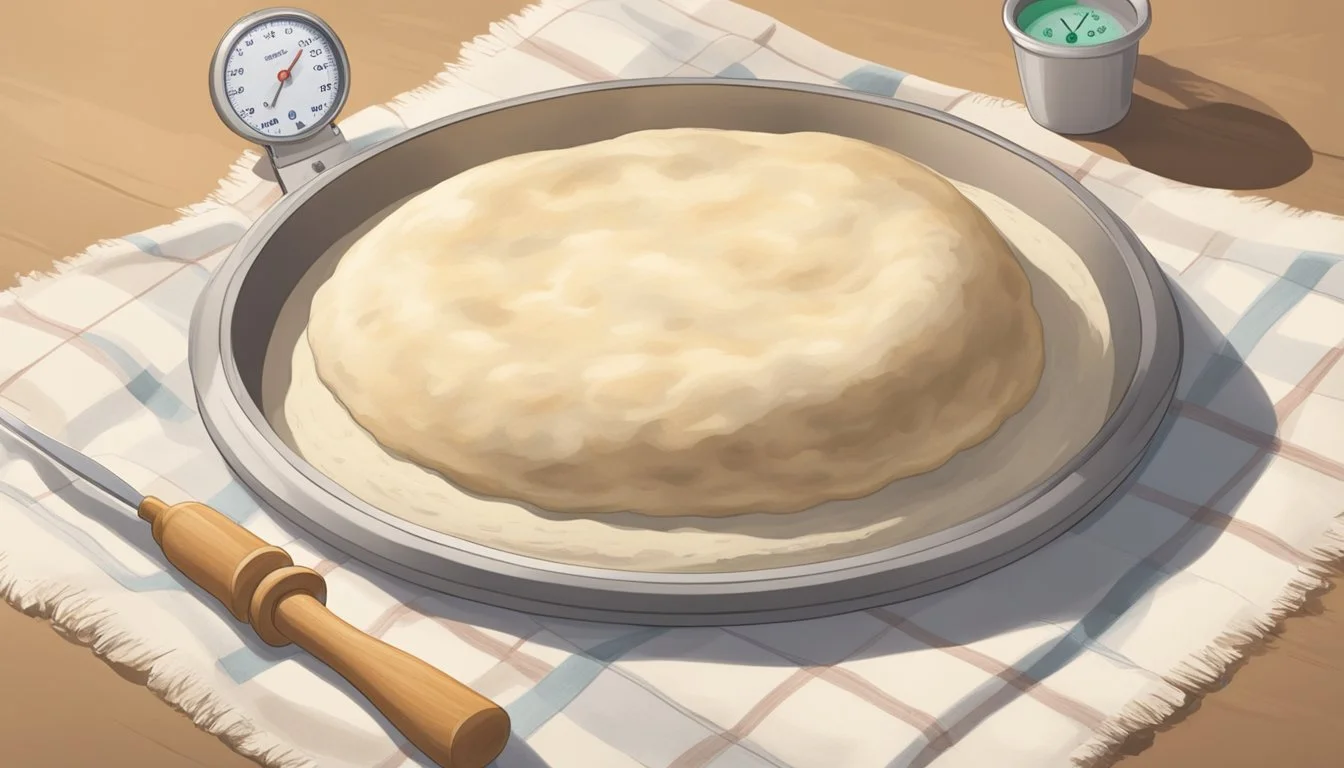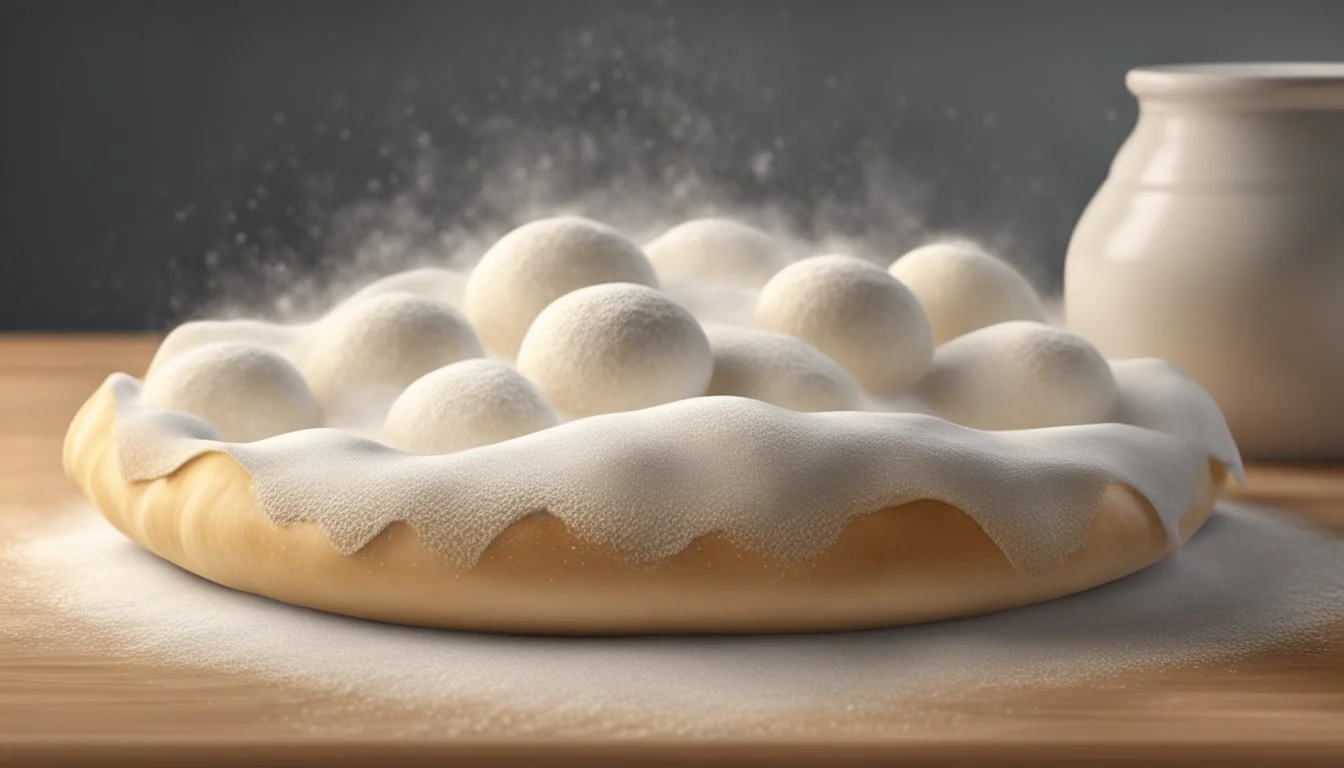Does Pizza Dough Go Bad?
Shelf Life, Signs, and Storage Tips
Pizza night can quickly turn sour if the dough you've been storing isn't in optimal condition. Yes, pizza dough can go bad if not stored or handled correctly. Fresh dough typically boasts a vibrant off-white color, while spoiled dough may take on a pale or grayish hue. Additionally, a sour odor can also indicate that the dough is no longer safe to use.
Mold or abnormal growth is another clear sign of spoilage. If the dough feels excessively sticky or has visible freezer crystals, these can also be indicators of degradation. Proper storage, generally in the fridge for a few days or in the freezer for longer periods, is crucial to maintaining the dough's quality.
Understanding these signs can prevent unintentional consumption of spoiled dough and save your pizza night. By knowing what to look for, you can ensure that each bite of your homemade pizza is as fresh and delicious as intended.
Understanding Pizza Dough
Pizza dough is a complex mixture of ingredients that interact in unique ways to produce the perfect base for a pizza. Key elements such as yeast, proper kneading, and fermentation all play vital roles in determining the dough’s texture and flavor.
Composition and Function of Ingredients
Pizza dough typically consists of flour, water, yeast, salt, and sometimes oil.
Flour: Provides structure and elasticity. High-gluten flours add chewiness, whereas lower-gluten flours make a softer dough.
Water: Activates gluten formation. The ratio of water to flour, known as hydration, affects the dough's texture.
Yeast: A crucial ingredient for fermentation.
Salt: Enhances flavor and controls yeast activity.
Oil: Adds richness and helps prevent the dough from drying out.
Each ingredient contributes uniquely to the dough's final quality.
Role of Yeast in Fermentation
Yeast is a microscopic fungus essential to the dough's fermentation process.
It consumes sugars present in the flour, producing carbon dioxide and ethanol. This gas forms bubbles, causing the dough to rise and develop a light, airy texture. Ethanol evaporates during baking.
Fermentation affects flavor, too. A longer, slower fermentation process typically results in more complex flavors, as acids and other byproducts accumulate. Controlling fermentation time and temperature is crucial for achieving the desired results.
Impact of Kneading on Dough Quality
Kneading dough is essential for developing gluten, a network of proteins that gives dough its elasticity and strength.
Proper kneading ensures that ingredients are evenly distributed and that the dough becomes smooth and elastic.
Insufficient kneading: Results in a crumbly dough that doesn't rise well.
Over-kneading: Can make dough too tough and difficult to shape.
Balancing this process is essential for creating the perfect texture. Experimenting with kneading times and techniques can yield significant differences in the final product.
Understanding these fundamental aspects helps in crafting a perfect pizza base, ensuring each ingredient and process is carefully managed for the best results.
Storage Guidelines for Pizza Dough
Proper storage methods can significantly extend the shelf life of pizza dough. From refrigeration to freezing, ensuring the dough is kept in airtight conditions prevents spoilage and maintains its quality.
Proper Refrigeration Techniques
Refrigerating pizza dough can keep it fresh for up to two weeks. First, shape the dough into a smooth ball. Lightly grease the dough with olive oil to prevent it from sticking. Place it in a plastic storage container with a lid or a large zippered bag, pressing out the air before sealing. The refrigerator should be set to 37-40°F (3-4°C) to prevent bacterial growth and ensure optimal storage conditions.
Extending Shelf Life in the Freezer
To extend the shelf life beyond a couple of weeks, freezing is an effective method. Shape the dough into individual balls. Wrap each ball tightly in plastic wrap, ensuring no air is trapped inside. Follow up by placing the wrapped dough in a freezer bag or an airtight container. When properly stored at 0°F (-18°C), pizza dough can last up to three months. To use, thaw the dough in the refrigerator overnight before bringing it to room temperature.
Importance of Airtight Containers
Airtight containers are crucial for maintaining the quality of pizza dough. These containers prevent exposure to air, which can cause the dough to dry out or become contaminated. Options include plastic storage containers with tight-fitting lids, zippered bags, and plastic wrap. Storing dough in an airtight environment minimizes the risk of bacterial growth and freezer burn, thus preserving its texture and flavor.
Signs of Spoilage
Identifying spoiled pizza dough involves examining its appearance, texture, and smell. Specific signs include color changes, off-putting odors, and the presence of mold or bacterial growth.
Visual Indicators of Bad Dough
Spoiled pizza dough often shows discoloration. Fresh dough typically has a vibrant off-white or beige color. If the dough turns pale or grayish, it may indicate that it has gone bad. Gray spots on the dough are another sign of spoilage, suggesting decomposition.
Look for any whitish spots or visible freezer crystals if the dough has been stored in the freezer. These indicate freezer burn, which compromises the dough's quality. Mold growth is an unquestionable sign that the dough is no longer safe to use. Mold usually appears as dark green, black, or bluish patches.
Changes in Texture and Smell
The texture of pizza dough is another important indicator of its freshness. Fresh dough should feel slightly sticky but still elastic and pliable. If the dough becomes slimy or excessively dry and tough, it is likely spoiled.
The smell is a crucial sign of spoilage. Pizza dough should have a neutral aroma unless flavored with ingredients like garlic or herbs. If the dough emits a sour, rancid, or off-putting odor, this suggests bacterial fermentation and spoilage. Always trust your nose; a strong, unpleasant smell usually means the dough has gone bad.
Recognizing Mold and Bacterial Growth
Mold and bacterial growth are clear indicators of spoiled pizza dough. Mold commonly appears as dark spots or fuzzy patches, often in green, black, or blue hues. If mold is visible, discard the dough immediately, as consuming moldy dough can be harmful.
Bacterial growth, while less visually distinct, can manifest through a sharp, unpleasant odor or a slimy texture on the dough's surface. Signs of bacterial contamination should be taken seriously, as they indicate that the dough is unsafe to eat. It's essential to inspect both the surface and inside the dough for mold or bacterial signs before use.
Health Considerations
Understanding the health risks of consuming spoiled pizza dough can help prevent foodborne illnesses. Proper storage and handling of dough are essential to ensuring its safety and freshness for consumption.
Risks of Consuming Spoiled Dough
Eating spoiled pizza dough may lead to food poisoning. Signs that dough has gone bad include a sour or off smell, discoloration, and unusual textures such as sliminess or excessive dryness. Consuming dough with visible signs of mold or abnormal fermentation can introduce harmful bacteria and pathogens into the body.
Symptoms of food poisoning from contaminated dough may include stomach cramps, nausea, vomiting, and diarrhea. These symptoms can appear within hours of consumption and may vary in severity. To minimize health risks, always inspect dough for any signs of spoilage before use.
Preventing Food Poisoning from Contaminated Dough
To ensure the safety and freshness of pizza dough, proper storage is crucial. In the refrigerator, dough should be stored in airtight containers and used within 3 days. For longer storage, freezing dough in sealed bags can extend its shelf life up to 3 months.
When handling dough, maintain cleanliness by washing hands and surfaces to avoid contamination. Check expiration dates and avoid using dough that has been improperly stored or shows any signs of spoilage. Freezer burn, indicated by whitish spots or crystals, is also a sign that the dough may not be good to use.
By following these preventative measures, one can significantly reduce the risk of foodborne illness from spoiled or contaminated pizza dough. Ensuring freshness at every step helps maintain a safe and enjoyable cooking experience.
Best Practices for Fresh Pizza Dough
To ensure your pizza dough remains fresh and produces the best pizza, follow these specific practices. Pay attention to the storage conditions and handling of both homemade and store-bought dough.
Optimal Conditions for Homemade Dough
Homemade pizza dough requires specific conditions to stay fresh longer. It's essential to store it in an airtight container. This prevents exposure to air and moisture, which can lead to spoilage. For short-term storage, keeping the dough in the refrigerator at temperatures between 37°F and 40°F is ideal.
For longer storage, freezing the dough works well. Divide the dough into smaller portions, wrap each portion tightly in plastic wrap, and place them in zip-top freezer bags. This method prevents freezer burn and keeps the dough usable for up to three months.
When ready to use, thaw the frozen dough in the refrigerator overnight. Allow it to reach room temperature before shaping for better elasticity. Fresh homemade dough should have a smooth, elastic texture without any unpleasant odors or discoloration.
Ensuring the Quality of Store-Bought Dough
Store-bought pizza dough also needs proper care for optimal use. Keep it in its original packaging or transfer it to an airtight container to prolong freshness. Refrigerate the dough until you plan to use it, ensuring it's kept at consistent temperatures to avoid premature fermentation or spoilage.
Check the expiration date and use the dough promptly. If freezing is preferred, make sure to wrap the dough in multiple layers of plastic wrap and place it in a freezer-safe bag. This helps to maintain quality and prevent freezer burn.
When it's time to prepare the pizza, thaw the dough slowly in the refrigerator and let it come to room temperature before handling. This approach ensures the dough retains its intended texture and performance, resulting in a delicious and fresh pizza.
Troubleshooting Common Dough Issues
When making pizza dough, you may encounter several common problems such as over-proofing, freezer burn, dry textures, off smells, and taste changes. This section will provide specific solutions to address these issues, ensuring your dough remains in top-quality condition.
Addressing Over-Proofing and Under-Proofing
Over-proofed dough can result in a weak structure and a sour taste. When dough rises for too long, it becomes overly airy and may collapse.
To fix this, gently punch down the dough to release excess gas and reshape it. Allow it to proof again for a shorter time, checking frequently.
Under-proofed dough lacks elasticity and proper volume. If the dough has not risen enough, give it more time in a warm, humid environment. Cover it with a damp cloth to prevent skin formation during proofing.
Handling Freezer Burn and Dry Textures
Freezer burn occurs when dough is improperly stored in the freezer, leading to dehydration and tough spots. Always wrap dough tightly in plastic wrap and place it in an airtight container before freezing.
For dry textures, add a slight amount of water or oil to the dough during kneading. This can help restore moisture and improve texture. If refrigeration causes dryness, avoid extended storage periods and ensure the dough is well-covered.
Dealing with Off Smells and Taste Changes
Dough with an off smell, such as a sour or alcoholic aroma, indicates fermentation problems. Over-fermented dough may emit these odors and should be discarded.
If your dough smells musty or has a bitter taste, it could be due to contamination or expired ingredients. Always use fresh yeast and flour. Check the ingredient labels for expiration dates and signs of spoilage.
When addressing taste changes, consider the balance of salt, sugar, and yeast in your recipe. Adjusting these can help fine-tune the flavor of your pizza crust.
Preservation Tips
Properly preserving pizza dough is crucial to maintaining its freshness and extending its shelf life. This involves using preservatives, careful storage techniques, and alternative methods to traditional preservation.
Using Preservatives for Longer Shelf Life
Using preservatives can significantly extend the shelf life of pizza dough. Common food preservatives, such as calcium propionate, help prevent mold and bacteria growth.
When adding preservatives, follow the recommended dosage to avoid altering the dough's taste. For natural preservation, olive oil can be used to coat the dough, which creates a barrier against air and moisture, reducing spoilage.
Wrap the dough in plastic wrap or place it in an airtight container to further protect it. Properly sealed, dough can last up to a week in the refrigerator. For further preservation, freezing the dough can extend its usability to several months. Make sure to use foil or freezer-safe bags to prevent freezer burn.
Alternatives to Traditional Preservation Methods
Alternative preservation methods can also help maintain the dough’s quality. One effective method is vacuum sealing, which removes air and prevents microbial growth. This can keep the dough fresh for several weeks in the refrigerator without added preservatives.
Another approach is using a refrigeration technique known as cold fermentation, which allows the dough to develop flavor while slowing yeast activity. This can maintain the quality for up to several days.
Lastly, pre-baking pizza bases before freezing can prevent dough spoilage. Bake the base partially, let it cool, and then wrap in plastic wrap or foil. This way, you can have ready-to-use pizza bases with an extended shelf life.







